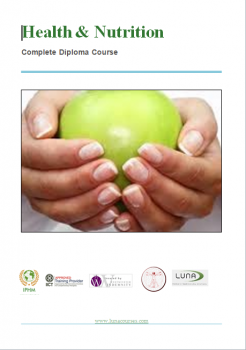Health & Nutrition Case Study
Published on 8 July, 2014 | Case Studies
Health and Nutrition Case Study –
Time started:12:00 Time finished: 13:00 Details of treatment

Patient came to me for advice based on previous medical problems and recent general health problems. Before attending the consultation I advised the patient to complete a blood test and bring the results with him. He is a 33 year old male who doesn’t class himself as very active due to using public transport around Barcelona and sitting all day working in an office job. This health and nutrition case study will show how I worked with this client.I completed a treatment card with him and discovered he has a history of Hopkins lymphoma dating back to 2002, when he was first diagnosed. He has been in remission since February of 2003 after having a course of six biweekly chemotherapy treatment. The client gave me a copy of his doctors report stating the details of his illness and current situation. Continuing asking my questions I discovered he recently has gone through a number of consecutive illnesses such as colds, flu, stomach flu with nausea and dhiorrea, low energy levels experiencing fever at night on occasions all during a span of one month. His doctor’s diagnosis was anaemia which is recent blood test confirmed by having an extremely low count of red blood cells. My client stated he had recently increased his exercise level by going to the gym but admiringly without paying attention to altering his diet adequately, which I concluded to be the main reason for his recent health issues along with a stress level 3, identified by myself due to a divorce last year, lack of job satisfaction and increased workload at work. I felt satisfied that my treatment would not cause any conflict as his doctor recommended the services of A health and nutrition practitioner. After assessing the patient’s situation we agreed on establishing a balanced diet, which has never been previously followed, paying particular attention to his sport activity and monitoring his progress on a weekly basis in order to be able to make any adjustments if necessary. I prepared the room with an adequate room temperature and lighting and upon arrival asked the patient to weigh himself to calculate his BMI (Body Mass Index) results. The patient weighed 172Ibs and measured 6’0″. With this information I could conclude that his BMI was 23 which for his height and weight is normal. Considering this information and that biologically the patient is at a stage when his lean muscle mass decreases and could easily experience increase in weight and body fat. I recommended a balanced diet consisting of the following: At least 8 servings of water on a daily basis which would maintain hydration and cool the body allowing it to keep moving, an increase of complex carbohydrates such as whole grain in bread, cereal, rice and pasta to increase energy levels and in bringing simple carbohydrates such as refined sugars found in cakes and biscuits to a minimum level would avoid an increase in body fat. I also recommended an intake of around 3-5 servings of vegetables per day such as mushrooms to aid the creation of red blood cells by providing iron and counteracting anaemic symptoms along with leafy vegetables such as cabbage and spinach to gain magnesium and calcium intake to aid an increase in energy levels improving bones and muscles. Also beans, lentils and soy products was suggested as being an excellent source of complementary proteins and in being combined with other food such as rice would create complete proteins to aid muscle growth. 3-4 servings of fruit per day such as banana and oranges was added to the list for having a wide number of vitamins such as vitamin C, a disease fighting anti-oxidant, and potassium to avoid muscular spasms. Red meat, poultry and fish was highly recommended for its protein values, containing thiamin which is good for muscular growth, and also having zinc which aids the processing of carbohydrates, proteins and fats. Finally milk, yoghurt and cheese products along with eggs were recommended at a level of 2-4 servings a day for its calcium and having a high quality of protein. Going Forward This is an ongoing treatment closely coordinated with my patient’s doctor and personal trainer which I believe to be successful as my client after following the diet for 2 weeks, has noticed a change in his ability to be more active and not feeling fatigue and not contracting illnesses such as colds or flu, which was previously frequent. |
||



